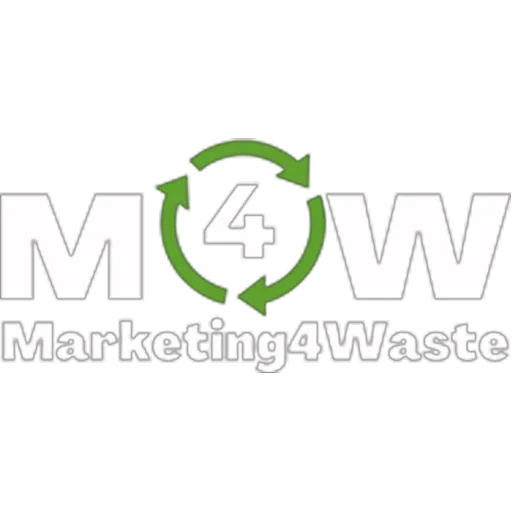Increase the Revenues of Your Waste Company With the Tips Shared in Our Blog Articles

The Silent Killer of Waste Management Fortunes: How Miscommunication is Poisoning Your Profits and the Bulletproof Blueprint to Turn Trash Talk into Cash
Ladies and gentlemen, let’s get straight to it.
The success—or failure—of your waste management company doesn’t boil down to shiny trucks, top-of-the-line sorting machines, or even how much you charge per bin. Those things matter, sure, but they aren’t what will kill your business.
What will kill your business is miscommunication. If you're not hearing me loud and clear, let me make it clearer: the misunderstandings you’re ignoring today are the cracks that will become tomorrow’s collapse. Communication is the golden thread running through everything, and if you don’t get that thread strong and tight, your company will unravel faster than you can say "waste collection."
Let me show you what I mean, why you need to care, and how to avoid becoming a cautionary tale.
The Hidden Peril of Misunderstandings
Let’s break down the anatomy of a misunderstanding. Think of it as a virus. It starts small, a misinterpreted memo, an unchecked assumption, or a poorly executed change in policy. But before you know it, that tiny misstep infects your entire operation, leading to confusion, inefficiency, and failure. Some of the biggest names in business history have fallen into this trap.
Let’s start with Kodak, shall we? Kodak invented the digital camera. Yes, you read that right. The same Kodak that’s now a textbook case of failure in the business world. They misread the signs, misunderstanding the market shift toward digital photography. What was their fatal flaw? A lack of internal clarity about the future. Their leadership didn’t communicate a cohesive vision, so they kept pushing traditional film while the world moved on.
Now, I know you’re thinking, "But I run a waste management company, not a camera business." Trust me, the lesson applies. You might not be competing with the iPhone, but if your team doesn’t understand where the market is heading or what your customers really need, you’re just as doomed as Kodak.
Let’s look at another titan that stumbled: Blockbuster. They misunderstood their industry. Their leadership saw Netflix coming, but they misunderstood the digital wave. Why? Because they were stuck in their ways, too comfortable with their existing model. It’s the same complacency that can happen in waste management, where you think you're safe because your routes are established and your customers are recurring. But are you evolving? More importantly, does your team understand the importance of evolving?
Levels of Misunderstanding: The Waste Management Blueprint
You see, misunderstandings happen on multiple levels within your organization. It’s not just about customers. It’s internal too, and that’s where the real damage happens because internal confusion always spills out into the market.
Here’s the breakdown of the three levels of misunderstanding and how they could be eroding your business right now:
1. Leadership-Level Misunderstanding
This is the top layer, where it all begins. The leadership team must have a unified understanding of the company’s goals, market trends, and operational strategies. If there’s a crack here, you can bet it’ll spread fast. Look at BlackBerry. Their leadership misunderstood where the market was headed. While Apple and Android were developing touchscreens and apps, BlackBerry was convinced its physical keyboard was the future. That single misunderstanding at the top led to their downfall.
Now, in your world, it could be your leadership team not being on the same page about investment in new technologies like automated sorting systems or advanced tracking software. If leadership isn’t aligned, every directive coming down the ladder will be tainted with confusion. And when there’s confusion at the top, it’s impossible to deliver clarity to your employees or customers.
2. Operational Misunderstanding
This is where the real hemorrhaging of time, money, and resources happens. Misunderstanding operational directives leads to inefficiency. Think about Nokia, the once-dominant mobile phone giant. Their internal operations were too focused on hardware, missing the importance of developing a robust software ecosystem like Apple’s iOS. That’s what put them out of the game.
For waste management, operational misunderstandings can come from a poorly communicated rollout of new routes, unclear training on new equipment, or mixed messages about customer expectations. You’ve got drivers, dispatchers, and technicians—if they’re not all on the same page, you’ll see service delays, misrouted trucks, and disgruntled customers.
3. Customer-Level Misunderstanding
Finally, we have the end result of poor internal communication: customer misunderstanding. If your customers don’t know what to expect from you, if they’re unclear on what you’re offering or how your service works, they’ll leave. Target’s failure in Canada is a textbook example. They rushed into a new market without doing their homework, resulting in empty shelves, pricing confusion, and a customer base that turned against them.
In waste management, this could be as simple as a miscommunicated pickup schedule or as complex as failing to inform customers about price changes or new regulations. If your customers don’t get a clear, consistent message from your company, they’ll go elsewhere, and they won’t look back.
The Alchemist’s Blueprint for Crystal-Clear Communication
So, how do we fix this?
How do we ensure that the deadly virus of misunderstanding doesn’t infect your business?
Here’s your blueprint for success—a straightforward communication system that starts inside and flows seamlessly out to your customers.
1. Unified Leadership Vision
Your leadership team needs to be crystal clear on the direction of the company. Hold quarterly strategic meetings, and ensure that every department head understands not just their silo, but the overall goals of the business. The leadership team must be able to articulate this vision without ambiguity.
What’s the key here? Simple, direct language and no assumptions. If your leadership team isn’t asking, “Does everyone fully understand the direction we’re heading?” you’ve already failed.
2. Cascading Clarity to Operations
Once leadership is on the same page, the message must be distilled and sent down to your operations teams. And I’m not talking about some vague memo. You need clear, actionable directives with specifics. What’s changing? Why is it changing? How does it impact each department?
Meet regularly with your operations teams and make sure the message is not only delivered but also understood. Use multiple communication methods: email, face-to-face meetings, dashboards—whatever it takes. If you think you’ve communicated enough, communicate more.
3. Direct-to-Customer Communication
Finally, and this is where most companies drop the ball—you need to communicate with your customers consistently and clearly. They need to know what you’re offering, when to expect it, and why they should stay with you. And let me tell you something critical here: Do not assume your customers know how you work.
Spell out the process, highlight changes well in advance, and never surprise your customers. You’ll build trust, and trust is the currency of customer loyalty.
4. Feedback Loops
Lastly, create feedback loops at every level. Ensure your leadership is constantly getting feedback from operations, and operations is getting feedback from customers. This way, you can catch misunderstandings before they become full-blown problems.
Thrive by Communicating Better
Here’s the bottom line: if your communication is unclear, you’re leaving success on the table. You’re inviting operational inefficiencies, frustrated employees, and confused customers. The companies that thrive, the companies that dominate their markets, are the ones that master the art of communication.
So, as the Waste Management Alchemist, I’m telling you now: get your house in order. Align your leadership, clarify your operations, and communicate clearly with your customers. Follow this blueprint, and watch your company rise, while your competitors—still tangled in their own misunderstandings—wither and fall.
To Your Success
Sam Barrili
The Waste Management Alchemist


© 2025 Marketing4waste - All Rights Reserved,
Marketing4Waste is a brand of MiM MarketingInterimManagers LLC
+1 801 804 5730

